All About Growing Cannabis With Reverse Osmosis Water
- What is Reverse Osmosis?
- How Does it Work?
- Is Reverse Osmosis Water Good for Plants?
- Disadvantages of RO Water for Weed
- Where to Get RO Water for Growing Weed
- Reverse Osmosis vs. Distillation
- Does RO Water Need Special Nutrients?
- How to Install an RO System
- Tips Before Buying
- Costs and Sizes
- Best RO System for Growing Weed
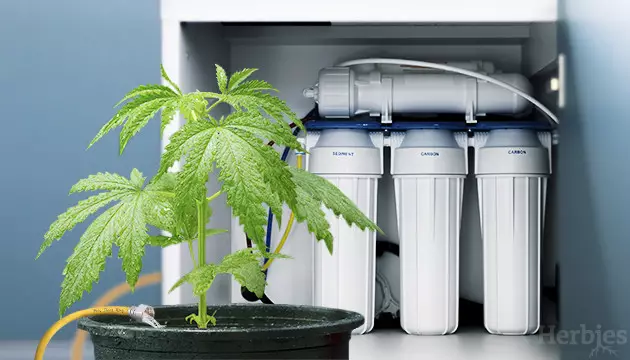
In cannabis cultivation, watering is something on which everything else hinges, and knowing how often and how much to water isn’t the whole story. The quality of what your plants drink is equally important, and growing cannabis with reverse osmosis water is one of the ways to ensure that your weed gets only the best water.
What is Reverse Osmosis?
Without getting too technical, reverse osmosis (RO) is a way to get rid of most salts dissolved in water. Reverse osmosis is unlike other filtering methods in that the water goes through a special thin-film membrane in the direction of the less salty. So, on one side of the membrane, you get almost pure H2O with close to zero TDS values.
Reverse osmosis is commonly used to desalinate seawater. It’s useful for our favorite hobby too, as making RO water for cannabis allows you to have more control over the composition of your nutrient solution.
How Does the Reverse Osmosis System for Cannabis Work?
A reverse osmosis system for weed does two key things: first, it uses pressure for filtration, and second, it uses a semipermeable membrane to let H2O molecules pass through while keeping almost all other molecules and impurities on the other side.
Some of those things that get filtered out are harmful – for example, lead and other heavy metals as well as arsenic, radium, and fluoride. Others – such as calcium, magnesium, potassium, phosphorus, nitrates, and sulfates – are necessary for the plants’ well-being. So, if you’re using reverse osmosis water for cannabis, make sure to make up for them with a nutrient product that has everything your plant needs.
Is Reverse Osmosis Water Good for Plants?
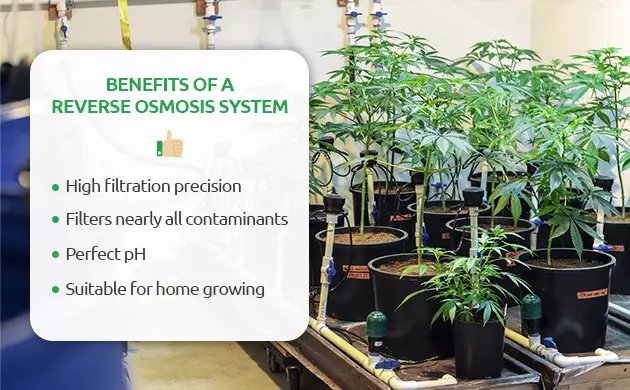
If your tap water is good for drinking, using RO water for growing weed is probably unnecessary, especially in soil. However, there are situations when it’s a very good idea.
Precision
Most growers don’t make their nutrient solution stronger than 800-900 ppm (parts per million), or else their plants begin to suffer from overfeeding. Nowadays, water can be too hard, meaning it can have 300 ppm or more right out of the tap, and that doesn’t leave much room for adding useful nutrients. In this case, reverse osmosis water for plants works great. You start with pure H2O and add exactly what your plants need.
High Purity
Besides dissolved salts like calcium and magnesium that are harmless for plants at normal levels, there are things in the water that are bad for both humans and plants. From radioactive particles to bacteria and heavy metals, reverse osmosis filters out these dangerous chemicals too.
Perfect pH
The pH levels of your nutrient solution influence how fully the roots of cannabis absorb different nutrients. Reverse osmosis makes the water slightly acidic – between 5.5 and 6.5 – which is the perfect range for weed cultivation. Of course, you’ll add nutrients to your RO water, and that will change its pH, so use a carefully calibrated pH pen at every step of the process.
Suitable for Home Growing
Modern RO systems are easy to install and use. They’re also priced reasonably enough to serve not only large-scale grow ops but home gardens as well. If you’re a hydroponic grower or your tap/well water quality is poor, reverse osmosis cannabis may be your best option.
Disadvantages of RO Water for Weed
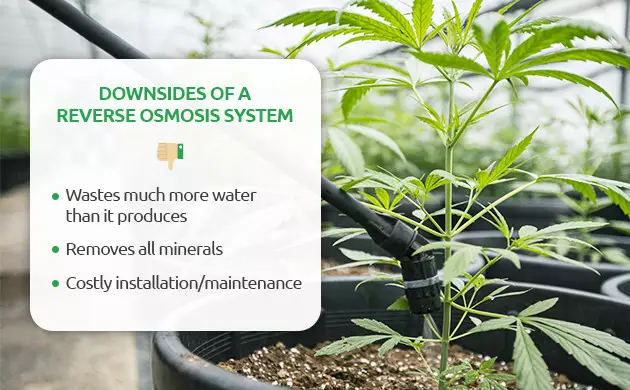
Before spending money on a reverse osmosis system for weed, think about some of its potential downsides.
RO Water is Wasteful
While making usable RO water, you’ll flush much more of it down the drain. It depends on the system, but get ready to waste up to 20 gallons for every one gallon of purified water.
Removes All Minerals
With reverse osmosis, you can’t simply decrease the TDS readings of your water solution by, say, half. It’s an all-or-nothing kind of scenario, and while getting rid of everything harmful and excessive, you’ll unfortunately also filter out a lot of the good stuff.
Costly Installation and Maintenance
Obviously, using reverse osmosis water for plants isn’t as cheap as simply turning on the faucet. Prepare for extra installation and maintenance costs, so make sure your water quality is indeed poor and you’re not just squandering your money.
Where to Get RO Water for Growing Weed
The most natural way is to make your own reverse osmosis water for cannabis by buying and running an RO system. However, you can also buy RO water online in the same stores that sell fish tank equipment. Stores such as Walgreens, Target, Kroger, and many others also offer bottled RO water for sale.
Reverse Osmosis vs. Distillation: Which Is Better?
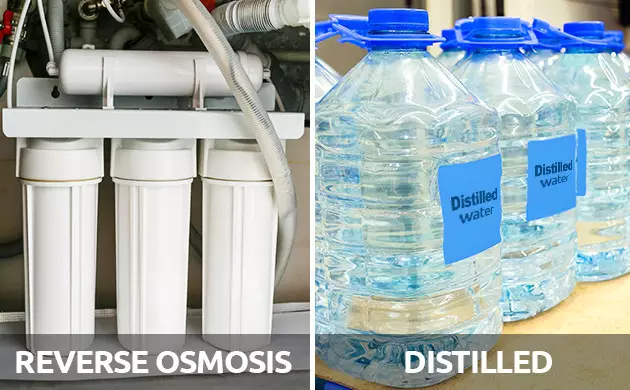
Both methods bring the same results: highly purified water, with almost no dissolved salts and almost zero TDS levels. However, there are some differences. Distillation requires the heating, evaporation, and condensation of water, and every step adds to your energy bill. RO (without a booster pump) consumes no electricity but produces a lot of wastewater.
The main difference lies in the capacity of both systems. We suggest thinking of distilled water as something to use for germination and very small seedlings in their first few days. The needs of grown-up plants can only be covered with a reverse osmosis system.
Does RO Water Need Special Nutrients?
As far as we know, no company markets special nutrients for RO water, so you can buy any nutrient line for cannabis that strikes your fancy. Just remember that unfiltered water contains calcium, magnesium, and many trace elements such as copper. If you filter them out, be sure to provide them all yourself.
This means that you’ll have to buy a CalMag supplement to add to your main nutrient formula (which is especially important for coco and hydro grows). As for micronutrients, make sure they’re listed on the label too. Some companies put them in a separate bottle, such as Flora Micro in the GHE Flora line.
How to Install an RO System
The best reverse osmosis systems for cannabis come from reputable manufacturers who have websites with step-by-step instructions, PDF manuals, and installation videos. Carefully study them and check them against what you have at home: faucets, drain pipes, connections, etc. This way, you’ll be prepared to adapt any instructions to your individual setup.
Our below step-by-step guide explains the installation procedure for an RO kit from US Water Systems. Make sure to use Teflon tape or lubricant on the threads (according to instructions) to keep everything watertight.
Step 1. Install the faucet that comes with the kit next to your normal faucet.
Step 2. Drill a hole in your drain pipe and attach the Drain Saddle to it.
Step 3. Turn off the cold water supply line and install the Feed Water Angle Stop Valve into it.
Step 4. Install the membrane and the three filters into the filtration system.
Step 5. Attach the relevant valve on top of the tank and put the tank in its place under the sink.
Step 5. Attach all the tubes that are color-coded for your convenience to connect the tank, the filtration system, the cold water line, the faucet, and the drain pipe.
We recommend not cutting the tubing (even if it seems too long) to be able to pull the filtration system out from under the sink if needed.
Tips for Buying a Reverse Osmosis System for Growing Weed
When deciding on the best reverse osmosis system for growing, be sure to check the following information.
How Big is Your Grow?
Cannabis plants use a surprising amount of water, so don’t assume that any reverse osmosis system for growing weed will cover all its needs and leave something for your household too. Look at the capacity of different RO systems and pick one that suits the scale of your grow op.
How Bad is Your Water Quality?
Depending on the level of contamination, you may want a system that purifies water in 3-6 stages. In addition to filtering out salts through reverse osmosis, you’ll first need to get rid of the sediment, trap chlorine and organic chemicals with activated carbon, and kill harmful bacteria with ultraviolet light or ozone.
How Much Are You Prepared to Spend?
While the street value of buds makes almost any investment into weed-growing equipment worth it, be prepared for quite a wide range of prices depending on the system’s capacity.
Reverse Osmosis Systems for Cannabis: Costs and Sizes
Reverse osmosis systems for cannabis are rated in GPD (gallons per day). RO machine manufacturers have a rule of thumb: take your potential need in RO water, add 20%, and then double the whole thing so that you don’t have to run your system more than 12 hours a day.
However, you’ll often want to fill up your tank quickly and not wait 12 hours, so aim for a system with at least 100 GPD (and more for a larger grow). The starting price will range from 100-150 U.S. dollars/euros.
Best RO System for Growing Weed
When looking for the best reverse osmosis systems for cannabis, you’ll be overwhelmed with choices, so we suggest a couple of options from brand names that you can trust.
For a Small Grow
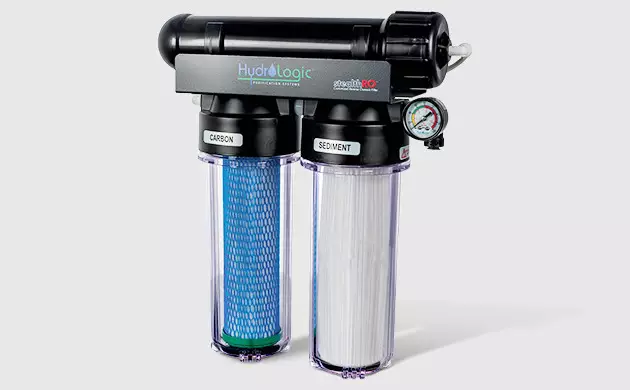
HydroLogic Stealth-RO150™ Reverse Osmosis System. With 150 GPD, this RO system will provide enough ultra-pure water for any amateur setup. It uses a sediment filter, an activated carbon scrubber, and an RO membrane that comes with a power flush kit for cleaning. Long-lasting and low-maintenance, this system is also among the most efficient on the market, producing less wastewater than most others.
If you’re a caregiver catering to several patients, you can also choose a higher-capacity option – a Stealth-RO300™ Reverse Osmosis System by the same HydroLogic brand.
For a Commercial Grow
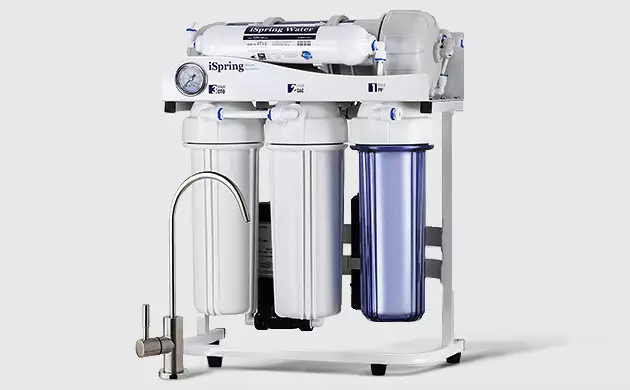
iSpring RCS5T High Flow Tankless RO Water Filter System. This industrial-sized reverse osmosis machine will let you grow hundreds of indoor plants and run a bath with RO water if you want to. With up to 500 GPD, or more than a liter per minute, this system has a high enough flow rate to function without a tank. It purifies water in five stages, eliminating up to 99% of impurities. It also has an exceptional 1.5:1 drain ratio.
Conclusion
If your tap water quality is poor, a reverse osmosis system for growing weed might be the best investment you ever make. Moreover, even if your tap water is of good drinking quality, it can be worth running it through reverse osmosis for hydroponics or a large commercial grow, as this will eliminate the need to account for the water’s TDS in all your calculations. If you’re serious about weed cultivation, think about boosting it with RO. Happy growing!
Herbies Head Shop expressly refuses to support the use, production, or supply of illegal substances. For more details read our Legal Disclaimer.


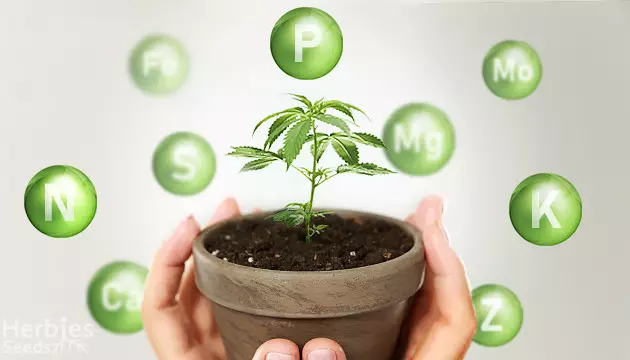
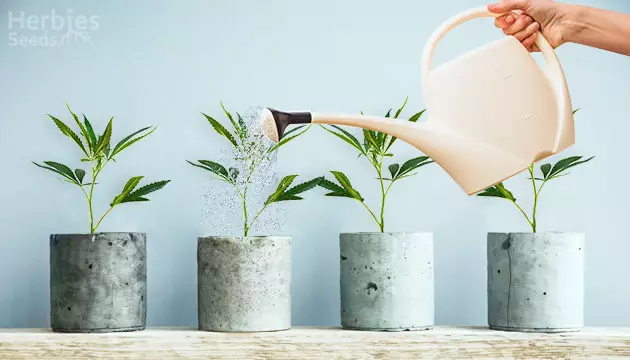



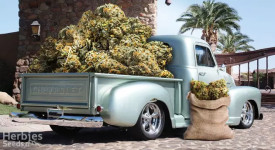
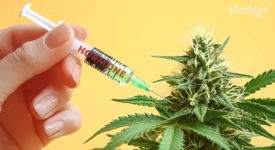


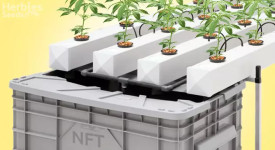
Thank you for leaving a comment for us!
Your feedback will be posted shortly after our moderator checks it.
Please note that we don’t publish reviews that: